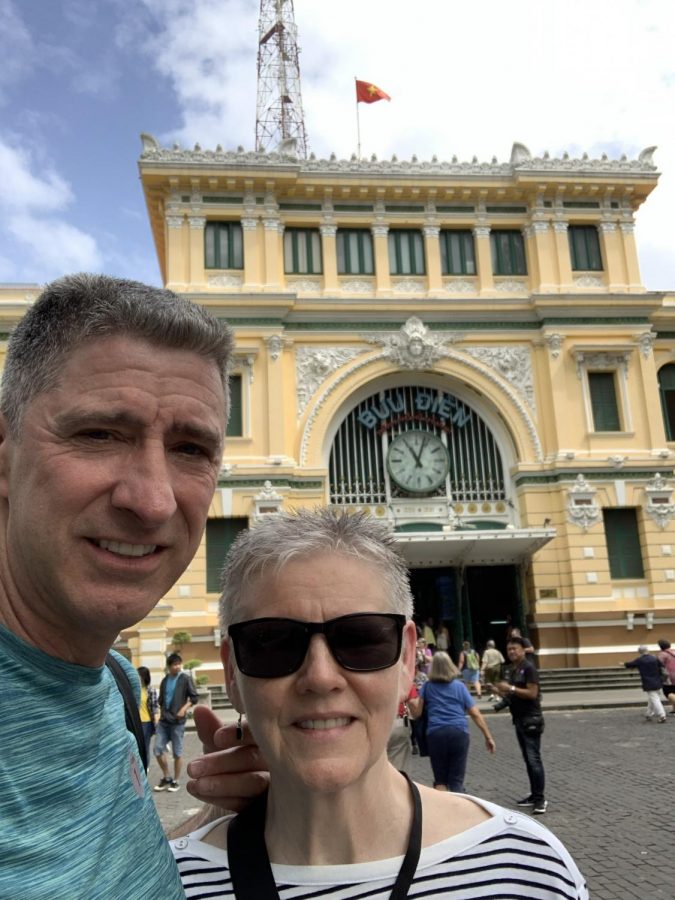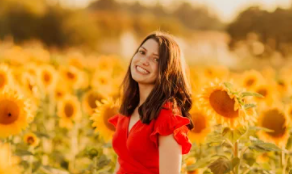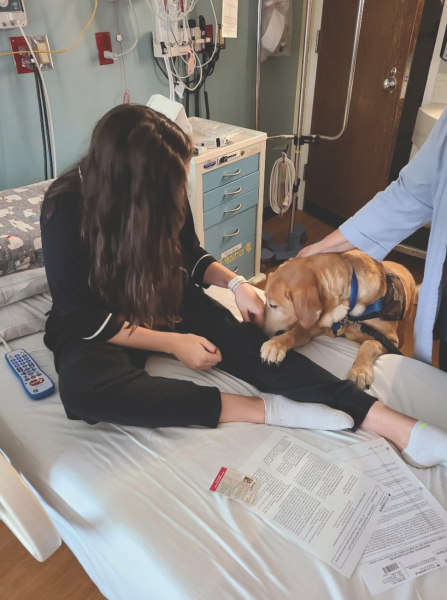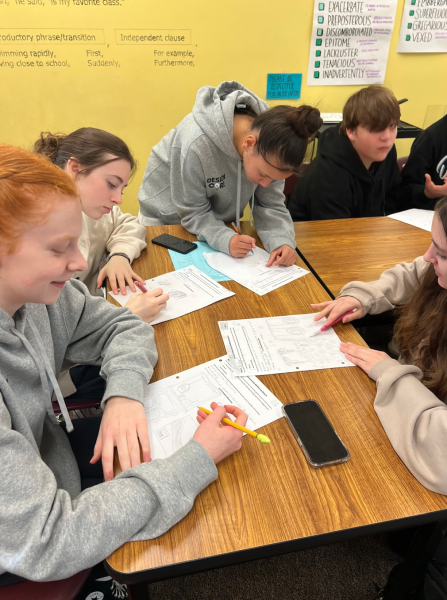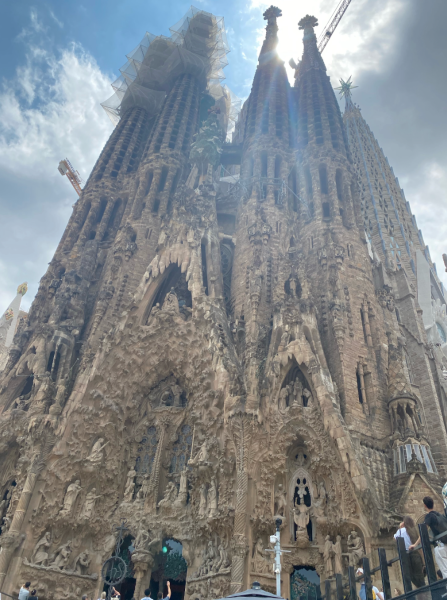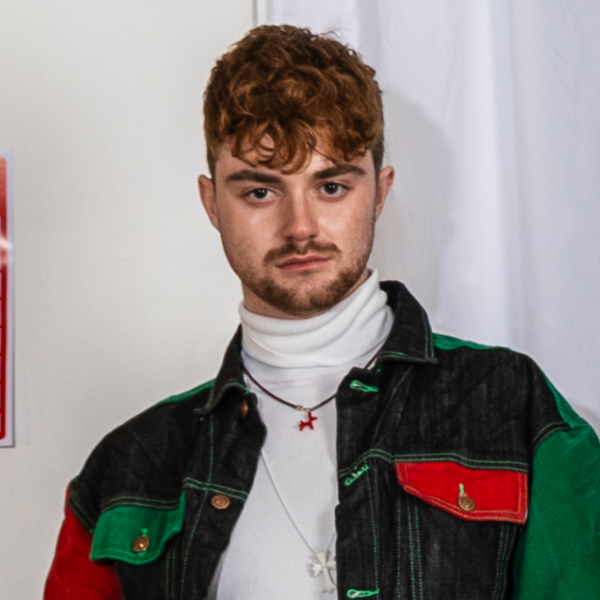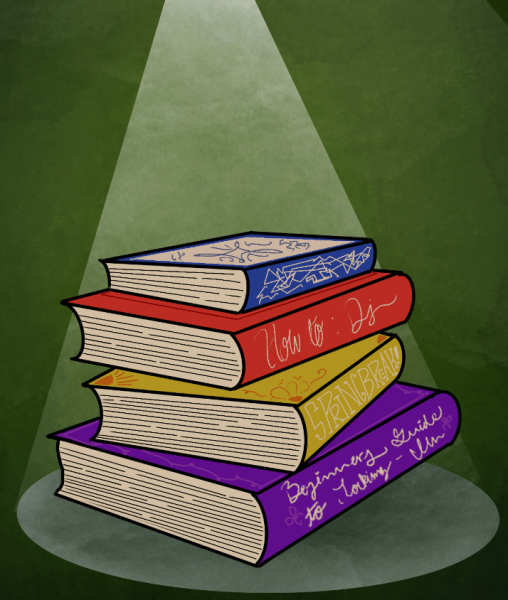Interview with COVID-19 survivors on board Diamond Princess cruise ship
April 20, 2020
When passengers boarded the Diamond Princess cruise back in early January, there was nothing but excitement on board for future adventures in Singapore, Vietnam, Japan and China. However, following the first diagnosis of Covid-19 on the ship on Feb. 4, the dream cruise, and the 3,711 guests and crew aboard it, were in for an experience that was anything but expected.
Two months after the cruise, nearly 700 individuals on the Diamond Princess have tested positive for Coronavirus. With the effects of Covid-19 widening with time, the Diamond Princess has not been the only cruise with outbreaks, with similar stories in California and Florida since February.
For Diamond Princess passengers Shelly and Charles Conlon, their experience aboard the cruise provides a first-hand perspective of quarantine, the virus and the United States’s administrative mistakes. In an interview with The Wolf, Shelly Conlon explained their experience on board the Diamond Princess, detailing a journey for the couple that starts in Singapore, but makes stops in China, Japan, Texas and Arizona.
January 6: Passengers board the Diamond Princess in Singapore
Q: Can you tell me a little background about the cruise. When was it? Where were you going?
A: Well, we left on January 2nd for Singapore. The cruise was from January 6 to February 4th, so approximately 29 days. We started in Singapore, we went to four stops in Vietnam, and some in Japan, Hong Kong, and Taiwan. It was a 29-day cruise. Some people only took 14 days, but we took the entire thing.
Q: Were you concerned about Covid-19 before you boarded the cruise?
A: No. It wasn’t even familiar to anyone in the world. Even though it started in China in late November-early December, they basically did not share that information with the world. We had no qualms about getting on the ship.
January 6 – February 4: All guests and crew members are aboard the Diamond Princess Cruise
Q: When you were on the cruise, did you see health precautions being taken?
A: Yes and no. The cruise line actually allowed people to take excursions into mainland China. They were not stopping us at that time because nobody knew it was that serious. On February 2nd, we stopped at a port in Okinawa, Japan. We started getting our temperatures checked. As it reached the end of the month [January], some of the countries were checking your temperature as you got off, that was it. No one really understood the depth of this virus. They were starting to check temperatures, but there was still no concern about people getting off and going on excursions. It wasn’t anything different. We docked in Yokohama, Japan on February 4th, but two days before we were in Osaka and there was real confusion getting off the ship. Not only were they taking our temperatures, but they were monitoring symptoms to look and see if they had coughs or anything. But quite honestly, that was only two days before we docked to get off the ship. We were scheduled to get off the ship on February 4th. When we were confined to our rooms, we couldn’t really see any cleaning or any special conditions because we were confined to our room at that point.
February 4-16: All passengers aboard Diamond Princess are placed in a 14-day quarantine on the ship in Yokohama, Japan
Q: What were the events that led up to your quarantine on the ship?
A: We docked in Yokohama to get off the ship on February 4th. The captain comes on and says that the Japanese health officials have boarded the ship and have now taken control of the ship. Needless to say, we could not get off the ship. They would not allow us to get off and they took control of the ship.
Q: Was it the ship captain that notified everyone about being quarantined? How did they let you know?
Yes. The ship captain was in charge of all of the communication, in theory. He came on to let us know that the Japanese officials had boarded the ship and that they were taking control because they had declared it a health emergency. So he continued to be in charge of the health and safety of us, but the Japanese government basically ‘redesigned the rules’ if you will. They created new rules for the passengers and [the captain] had to make sure that we were okay. He continued to give us communication throughout this, but there were times when the Japanese officials were releasing information to the press before they told him, which was not good.
Q: What was it like in there, just being stuck in your rooms?
A: It really wasn’t bad. It wasn’t bad for us because we had a balcony. So for us, we had our state room, so we had that extra space. We could get outside, we could get some sunshine, we could exercise on our balcony, so it really wasn’t that bad.
Q: What was food like and how did they do different services?
A: Once we were quarantined, the Japanese came onboard, and from that point on our food was delivered to us. Breakfast, lunch and dinner was delivered to us. We didn’t really have any choice. You were just given what they cooked for you. The crew who delivered the food to your room were wearing masks and gloves at that time. They did not touch you and when you opened your door you had to have your mask on.
Q: What was communication like? Were they giving you updates about people while you were in there?
A: Well, the captain was phenomenal. I cannot give enough credit to Princess Cruise Line because he would come on two to three times a day to try to give us updates to what was happening, but he could only update us based on what the Japanese government was providing him to tell us. But he did a phenomenal job … Just a stellar captain.
Q: Were you hearing updates about the people that were actually sick on the ship?
A: Yes. You have to keep in mind that this was so early on that they didn’t have equipment to test everyone, but the Japanese government did, I think, a good job, for what they knew at that time. Yes they made mistakes … They certainly made mistakes. They started testing [people on ship] with symptoms, obviously. And so then, a week into it, they started testing people by age groups because they were concerned about older people. They started with people that were 90 and over. And then they went with people that were 80 and over. So it took a few days. Those results were being shared with us via the captain.
Q: How long were you quarantined to your rooms on the ship?
A: We were supposed to be there for 14 days. On the twelfth day, the United States State Department basically sent a plane over and repatriated us into the United States. So we were there 12 days in quarantine on the ship.
February 16 – March 4: The Conlons and other passengers of the Diamond Princess fly to the Lackland Airforce Base in San Antonio, Texas
Q: How did you end up getting back to the United States?
A: The state department flew in two converted cargo planes. It was miserable, let me tell you. They took cargo planes, huge cargo planes, 747’s, and they bolted in some old airplane seats. So all these seats would be mismatched, the rows were not aligned, there were no overhead bins, and no oxygen masks if something should happen. They had to fly low so that the oxygen levels were adequate. So we had to wear masks for the entire time we were on that flight. There were medical healthcare workers aboard that came around twice during the flight to take temperatures of all of the passengers. There were about 150 passengers on the flight coming to Texas, which is where we went. Our plane went to Lackland Airforce Base in San Antonio.
Q: What did you do once you were at the Airforce Base?
A: So, what they decided was because we were so contagious on the ship, they wanted us to do another 14 days of quarantine. So we flew from Japan to Lackland Airforce Base in San Antonio and we spent another 14 days on the base in San Antonio. They put us up in military housing that was segregated from the rest of the base. So we were in buildings that were similar to hotel rooms, but it would be like if you had a hotel room and you shared a bathroom with a person in the next hotel room. So, even though there was a shared bathroom, you had basically two hotel rooms because they separated it; they didn’t want people sharing bathrooms, so my husband and I basically had two hotel rooms with a bathroom in between and we stayed there for 14 days. Now, during that time they allowed you to walk around the grounds as long as you wore a mask and stayed six feet away from everybody.
Q: Was there testing available?
A: During this time people continued to show signs and then they would be transferred to the Texas Center for Infectious Diseases. They offered volunteer, optional testing, so at this point we hadn’t been tested. We were tested on February 26th because we volunteered. Some people left there without being tested, so I’m guessing that helped the germs be spread throughout the country. My husband’s test came back positive on February 28th, and he was transported to the Texas Center for Infectious Diseases hospital, even though he was fine, he felt fine and had no symptoms. And then my test results came back the 29th as inconclusive so I had to retest on March 1st, and it came back as positive on March 4th. So then I was transferred to the Texas Center for Infectious Diseases with him, so we shared a room.
March 4-12: The Conlons are quarantined at the Texas Center for Infectious Disease for two weeks
Q: What was it like in the Texas Center for Infectious Diseases? How did they take care of you?
A: Well, that was not a very pleasant experience. It was a typical-looking hospital room, but it was called a negative pressure room. All of the healthcare workers wore the hazmat protective medical gear and our meals were delivered there, too. The difference was conditions were not as good, you could not go outside, you were confined to your room. We had a few times, 20 minutes a day, where they would let you out onto an enclosed porch that had iron bars so you could get 20 minutes of fresh air, that’s it. It was not managed very well there to be honest. It felt like prison. The food was less than satisfactory, and then we stayed there until we both tested negative twice. So, in order to verify that it was gone out of your system, you had to have two consecutive, negative tests, so we finally were both released from there. For my husband it was March 9th, and for me it was March 12th, and we left there and drove back to Phoenix where we live.
March 12 – present: The Conlons are back in Phoenix, Arizona, testing negative for Covid-19
Q: How much time were you in quarantine total?
A: So, total quarantine from the time we were on the ship, to Lackland, to the hospital, was 39 days.
Q: Overall, do you think the cruise line and the government treated you as well as they could have?
A: In summary, the cruise line did a phenomenal job. No complaints about the cruise line. They even followed up with us when we got back to the United States, they gave us our luggage, and they took total care of us. The U.S. government, unfortunately, did not do so well. They’re still struggling, as you know. You know, the CDC was in charge of the operation once we got back to the states. They are not great managing those types of crises. From a leadership and management perspective, they fall short. They were contradicting… You know, they quarantined us all and we had legal documents. This is a federal, legal quarantine, which they hadn’t done since the ‘60s for Smallpox, I believe. We were required to stay there. We could have been arrested if we tried to leave the base … It was serious. But, yet they allowed people to leave without getting tested. Those people went back into their communities and very likely spread the disease, so I don’t feel the government did a good job managing it. I still don’t think they are. So my answer is, the government did not do so well in managing the situation.
Q: Do you think the United States should have taken measures earlier?
A: Absolutely, yes. We should have started with testing about three to four weeks quicker. There is no doubt in my mind. I think there was this illusion among American citizens that we had this safety net. We’re the richest country in the world, we’re the most progressive country in the world so we’ve got all of our ducks in a row. This is not true. I’m not going to get political, but the healthcare workers that took care of us told us there was a commission in place to handle pandemics that was created … But they said there were things in place that were undone by this administration. Once I got back, I started researching and, come to find out, there was a commission. There has been much talk about pandemics, but it wasn’t taken seriously in the past. So shame on us. Hopefully we learn from it and we don’t have this happen again.
Q: Overall, do you think social distancing guidelines are important for others to follow?
A: Yes. I think so. I think people should continue social distancing and need to be taking it seriously because we saw firsthand what this does. There were people on our ship that died from this. How long should people social distance? I don’t know, but I think the data will tell us.
Q: Any last comments or advice for people during this pandemic?
A: God, please don’t hoard the groceries.

